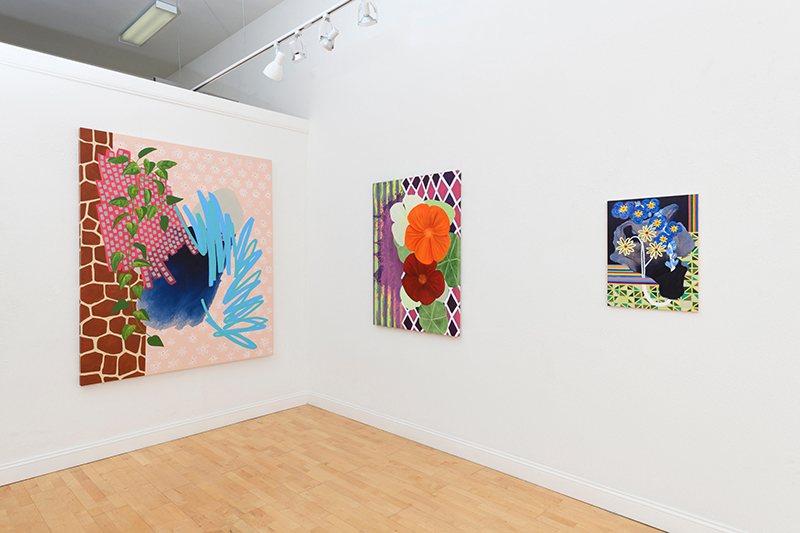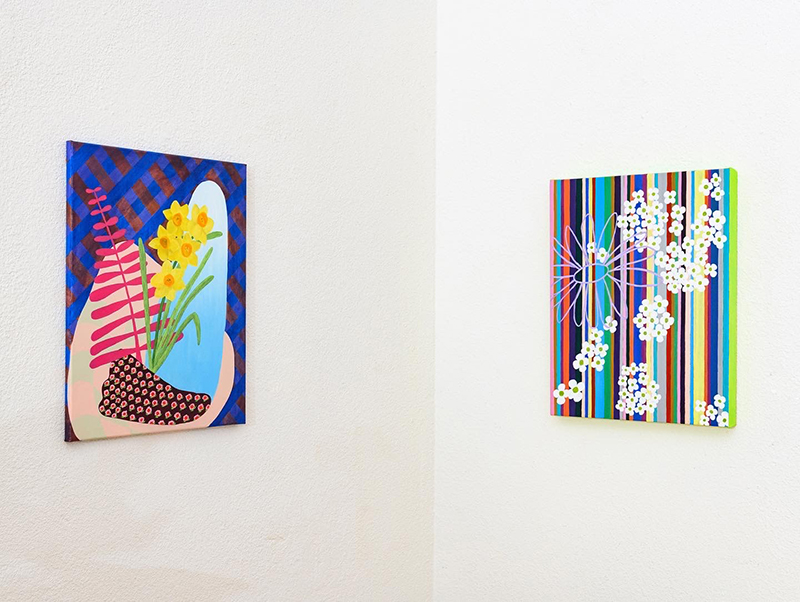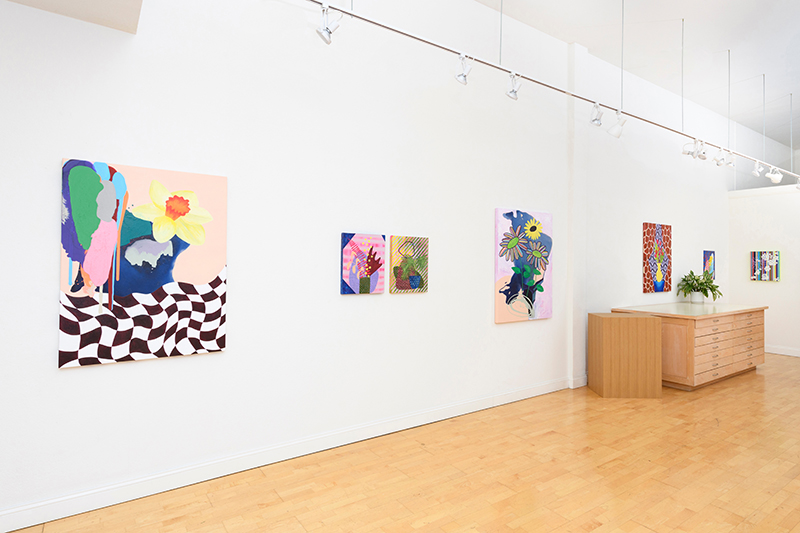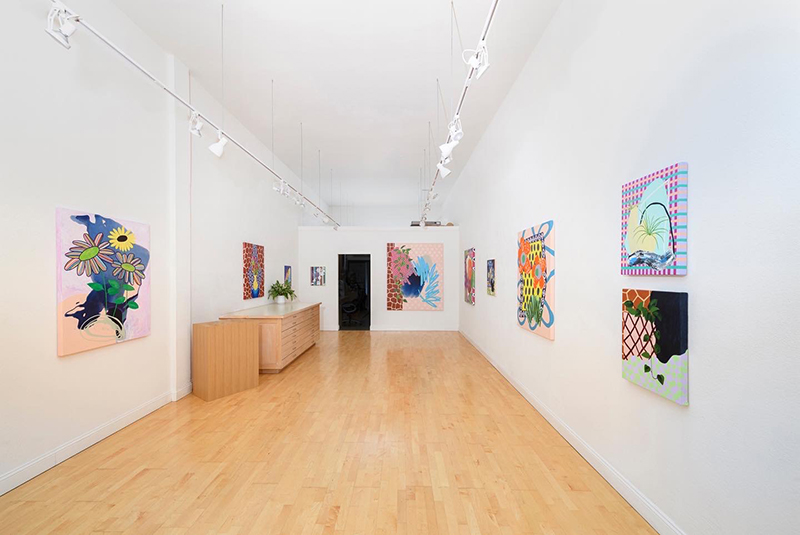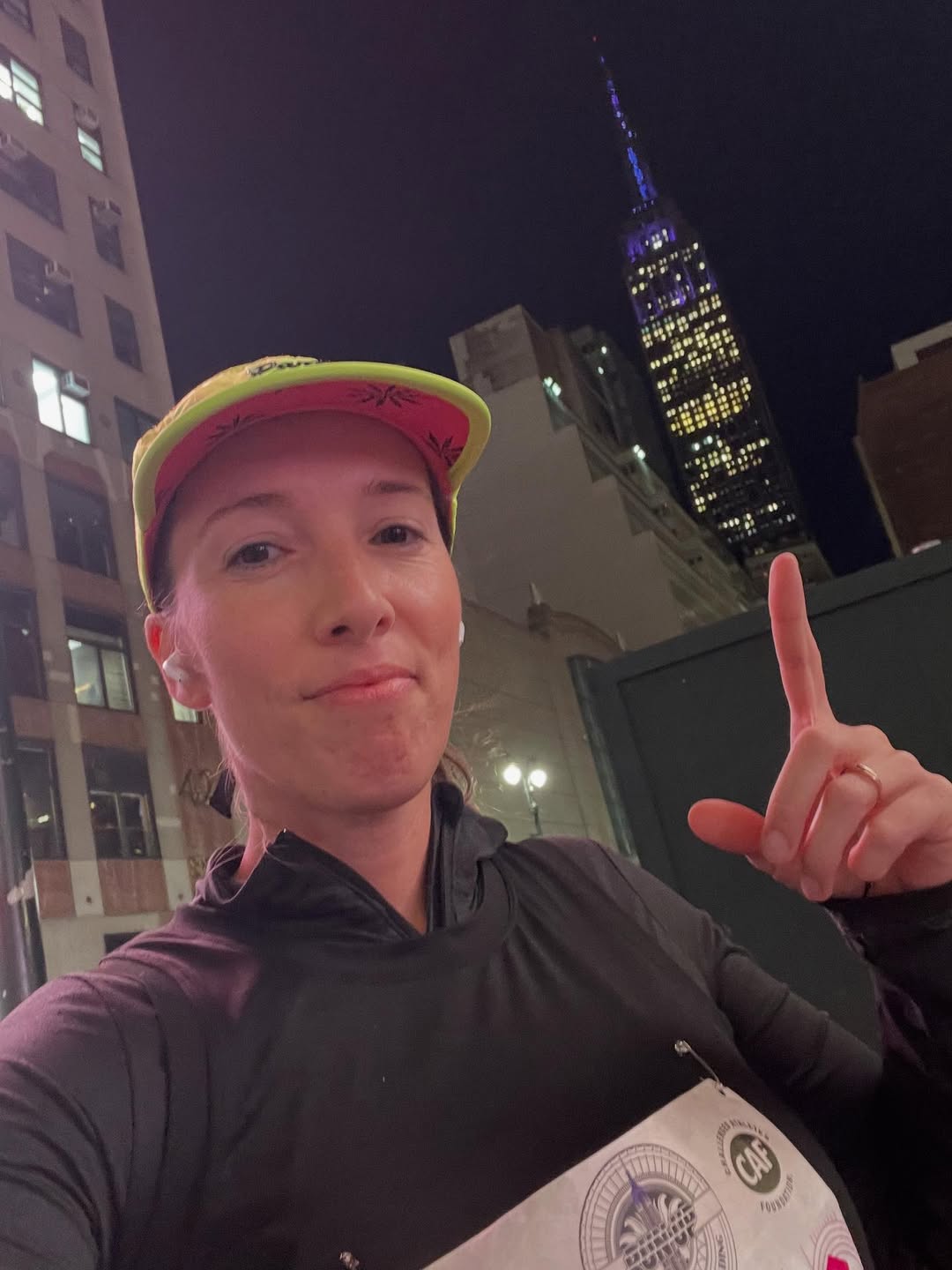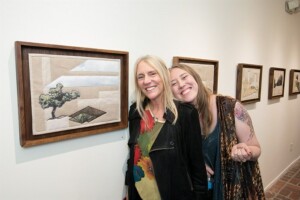
For Amber Jean Young, the loss of her mother to ovarian cancer on January 1, 2019, caused a grief so acute that it completely altered an essential part of her identity: her art.
An interdisciplinary artist who holds a Master of Fine Art from San Francisco Art Institute, Amber had been primarily working with textiles and quilting before the death of her mother, singer-songwriter Pegi Young. But when Pegi died, the world splintered apart for Amber, which dramatically affected her artistic process. “There was a real sea change in the artwork because of my mom’s passing. It didn’t really make sense to continue the trajectory I had been on anymore.”
As Amber struggled to pull herself out of the “grief hole,” as she described it, she turned to painting. “At a different phase in my life when something difficult had been happening, I just made patterns and it kind of soothed me through it,” Amber said. So, she revisited the technique. But this time around, she created her patterns in the brightest of shades with the hope of sparking the production of serotonin and other ‘happy hormones’ in her brain. “It was all deliberate and an important part of how to proceed in an extraordinarily difficult time,” Amber explained.

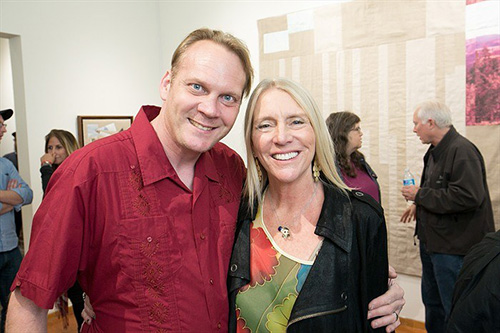
Though she hadn’t worked much in that medium since her undergraduate years, experimenting with vibrant, saturated paints seemed like the perfect way to immerse herself in the bold color that researchers say can boost moods.
Color and pattern had also helped Amber’s mother during a hard period in her life that occurred some years prior to her diagnosis. But for Pegi, these mood boosters were not reflected on a traditional canvas but instead in her clothing choices. As Amber told it, her mother went from mainly wearing black to dressing in vivid prints. “We talked about how it just made her feel good to wear all these colors and patterns. And of course, when she got her diagnosis, she really doubled down on that.”
From grief grows a garden
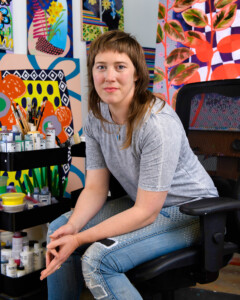
Another shared affinity that brought mother and daughter together were plants, an element that also made its way into Amber’s paintings. It was when she started exploring the use of floral shapes as patterns that it finally dawned on her that she was, in fact, creating a garden. And that’s when Amber’s work came into clear focus because she realized that the project had a purpose beyond trying to push past her grief — it was to make a garden in celebration of a most meaningful life, a life forever intertwined with her own.
“I think that for this body of work, I was really trying to tap into these touchstones that she and I shared and things that brought us together,” Amber said. She also wanted to conjure the feeling of those precious good days that her mother had after diagnosis. “As everyone in the cancer community knows, those days are hard to come by, so I wanted to highlight that in the work—not in an overt way, but by incorporating color, patterns, flowers and houseplants.”
This process of memory and healing eventually evolved into an exhibition, entitled “Pegi’s Garden,” that she dedicated to her mother.
Honoring a life—and helping the cause

It’s fitting that Amber paid homage to her mother through art, as Pegi had always championed her daughter’s creative pursuits. “She was super enthusiastic,” said Amber, who credits both of her parents with facilitating her devotion to art early on by enrolling her in classes and providing her with supplies. “I have high-profile parents (Amber’s father is singer-songwriter Neil Young) so everything should be couched in the amount of privilege my family has. It gave my parents the flexibility to just let me explore and really embrace who I am. I’m eternally grateful for that.”
Amber’s solo art exhibition was held from March through April of 2022 at Bryant Street Gallery in Palo Alto, California. It both commemorated Pegi and raised funds for ovarian cancer research. A portion of the proceeds from the sale of Amber’s paintings was donated to Ovarian Cancer Research Alliance, and Pegi’s siblings matched that sum, resulting in a gift of more than $14,000.
As Amber noted, “What better way to celebrate a person than to make art about them and try to eradicate the thing that killed them?”
“I just know that if you help a cause like this, you’re moving the ball forward. You’re putting your resources behind something that’s important,” Amber said. “I really think research is important to get ahead of this disease. And so that we can save lives.”
Her advice for anyone who has contemplated using their creative talents to raise funds for the cause is to just do it, whether that involves a big event or simply donating proceeds from the sale of their artistic wares. “Don’t overthink it. Just give people a way to support you and whatever creative thing you’re doing and support the organization. At the heart of it, any amount you can raise is helpful.”
A legacy seeded with love
When Pegi disclosed her diagnosis to her daughter, it became a daily ritual for Amber to call her mom, in addition to visiting her in person as often as she could. “It does something good for your spirit to show up for them every day, even if they’ve got nothing new to say, even if they’ve been in bed for a week because they’re nauseous. It helps them and it helps you to feel connected to this person while they’re going through this really difficult time. And I think it matters.”
Every morning, Amber would call her mom. And on the days that Pegi could be moving about, she would inevitably be up watering her plants. “I have this really lovely vision of her being out all over the house just watering things.” As Amber explained, it was one of the ways that Pegi, who was often homebound at that time, would make the best of her situation, even in the moments that she was not feeling well physically.
“In my experience, my mom was extremely motivated to not be dispirited. It was surprising how adamant she was about staying in a positive frame of mind,” Amber said. “That being said, it’s a Herculean effort to stay positive when you’re dealing with cancer. It’s hard on the patient and it’s hard on the family. It’s not something you can adequately explain. My heart goes out to anybody whose family is going through this.”
“She was a lot of things to a lot of people,” Amber noted. “She was a force. Once she passed, I kept thinking to myself, you don’t really get over it. You kind of just grow around it.” And in Amber’s case, it’s a vibrant garden that has sprung up around her grief — a vivid symbol of life rooted in the steadfast bond between a mother and her daughter.
